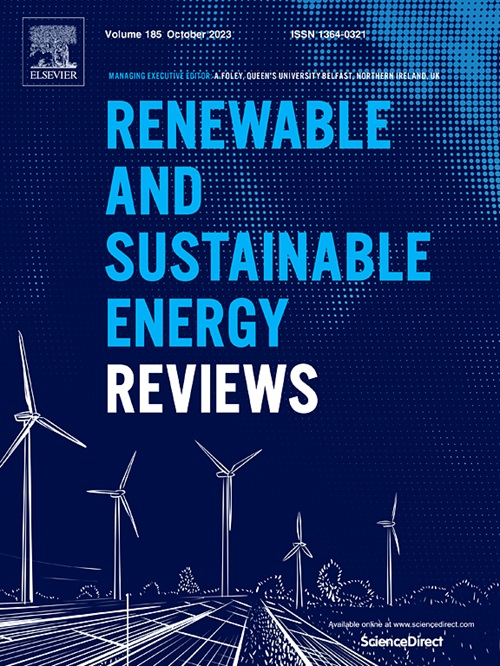回顾欧盟在能源效率和社会政策方面的政策联系
IF 16.3
1区 工程技术
Q1 ENERGY & FUELS
引用次数: 0
摘要
本文旨在分析欧盟能源政策是如何将社会政策概念与能源效率政策相融合的。人们越来越多地通过能源贫困、能源不平等和缺乏凝聚力等社会政策概念来理解能源效率。先前的研究表明,在谈到提高能效的努力(如翻新建筑物)的多重好处时,欧盟委员会强调了能效的社会方面。我们采用混合方法,结合欧盟委员会、欧盟理事会和欧洲议会的材料,从社会政策的角度审视能源政策。我们的分析分两个步骤完成:(i)确定哪些欧盟机构作为议程制定者引入能源效率的社会方面,以及(ii)描述和分析将社会概念与能源政策合并的框架过程。我们通过对欧盟政策文件进行定性和定量分析来做到这一点。一系列的关键词被用来探索社会政策和能源政策之间的联系,作为分析的定量部分的一部分。我们的结论是,欧洲议会首先将社会方面与能源政策领域联系起来。然后,委员会通过纳入社会政策方面来加强既定的联系,主要是在向能源效率和零碳建筑过渡的政策中,其中能源贫困等概念成为中心。本文章由计算机程序翻译,如有差异,请以英文原文为准。
Reviewing the EU policy nexus of energy efficiency and social policy
This paper aims to analyse how the European Union (EU) energy policy has merged social policy concepts with energy efficiency policy. Energy efficiency has increasingly become understood through social policy concepts such as energy poverty, energy inequality, and lack of cohesion. Previous research has shown how the social aspects of energy efficiency have been highlighted by the European Commission when talking about the multiple benefits of energy efficiency increasing efforts, such as renovating buildings. Using a mixed-method approach with material from the European Commission, the Council of the European Union and the European Parliament we review energy policy from a social policy perspective. Our analysis is done in two steps: (i) identifying which of the EU institutions acted as an agenda-setter introducing the social aspects of energy efficiency, and (ii) describing and analysing the framing process of merging social concepts with energy policy. We do this through qualitative and quantitative analysis of EU policy documents. A range of key words are utilized to explore the links between social policy and energy policy as part of the quantitative part of the analysis. We conclude that social aspects are first connected to the energy policy field by the European Parliament. The established connection is then reinforced by the Commission by the inclusion of social policy aspects, mainly in the policy on the transition to energy efficiency and zero-carbon buildings, where concepts such as energy poverty become central.
求助全文
通过发布文献求助,成功后即可免费获取论文全文。
去求助
来源期刊

Renewable and Sustainable Energy Reviews
工程技术-能源与燃料
CiteScore
31.20
自引率
5.70%
发文量
1055
审稿时长
62 days
期刊介绍:
The mission of Renewable and Sustainable Energy Reviews is to disseminate the most compelling and pertinent critical insights in renewable and sustainable energy, fostering collaboration among the research community, private sector, and policy and decision makers. The journal aims to exchange challenges, solutions, innovative concepts, and technologies, contributing to sustainable development, the transition to a low-carbon future, and the attainment of emissions targets outlined by the United Nations Framework Convention on Climate Change.
Renewable and Sustainable Energy Reviews publishes a diverse range of content, including review papers, original research, case studies, and analyses of new technologies, all featuring a substantial review component such as critique, comparison, or analysis. Introducing a distinctive paper type, Expert Insights, the journal presents commissioned mini-reviews authored by field leaders, addressing topics of significant interest. Case studies undergo consideration only if they showcase the work's applicability to other regions or contribute valuable insights to the broader field of renewable and sustainable energy. Notably, a bibliographic or literature review lacking critical analysis is deemed unsuitable for publication.
 求助内容:
求助内容: 应助结果提醒方式:
应助结果提醒方式:


